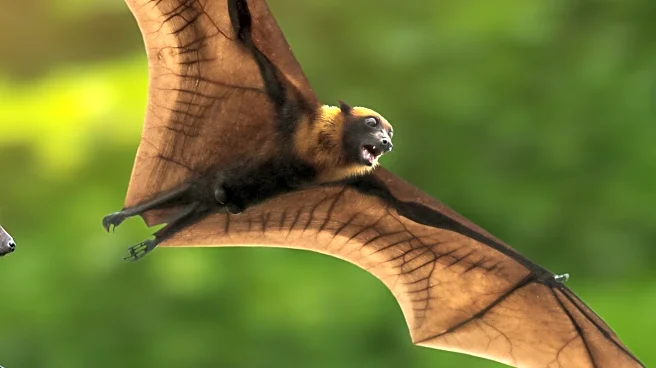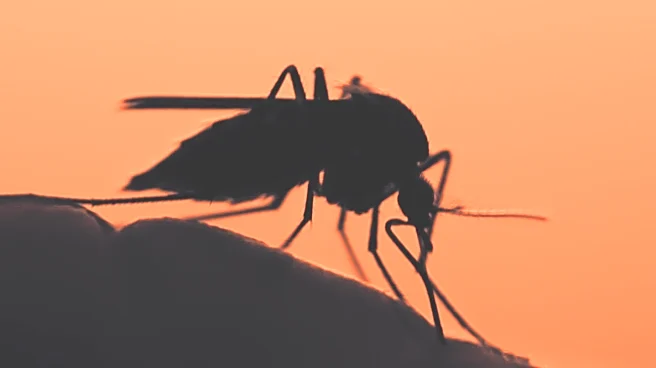What's Happening?
A recent study has analyzed the viral epidemic potential across various mammal species, with a focus on bats. The research examined 889 mammal species, including 202 bat species, infected by 112 unique
virus species from 23 virus families. The study found that the mean case fatality rate (CFR), maximum CFR, and the fraction of viruses with onward transmission varied significantly across different species. Bats exhibited high phylogenetic signals in these measures, indicating a strong correlation between their evolutionary traits and viral epidemic potential. The study identified several high-risk clades within bats, particularly for togaviruses and flaviviruses, which are known for their potential to cause significant human epidemics.
Why It's Important?
Understanding the distribution of viral epidemic potential is crucial for predicting and preventing future outbreaks. Bats are known reservoirs for many viruses that can spill over to humans, making them a focal point for zoonotic disease research. The identification of high-risk bat clades can help target surveillance and intervention efforts more effectively, potentially reducing the risk of future pandemics. This research highlights the importance of phylogenetic studies in understanding how evolutionary traits influence the spread and impact of viruses, which is vital for public health planning and policy-making.
What's Next?
The study suggests that further research is needed to explore the specific mechanisms that make certain bat clades more susceptible to hosting high-risk viruses. This could involve more detailed genetic studies and ecological assessments to understand the interactions between bats and viruses. Additionally, the findings could inform global health strategies, particularly in regions identified as geographic hotspots for zoonotic risk, such as Central America, Southeast Asia, and equatorial Africa. Enhanced surveillance and targeted interventions in these areas could mitigate the risk of future outbreaks.
Beyond the Headlines
The study raises ethical and ecological considerations regarding the conservation of bat species, which play crucial roles in ecosystems as pollinators and insect controllers. Balancing public health concerns with ecological preservation is a complex challenge that requires careful policy-making. Furthermore, the research underscores the need for international collaboration in addressing zoonotic diseases, as viruses do not respect national borders, and global efforts are essential for effective prevention and control.













